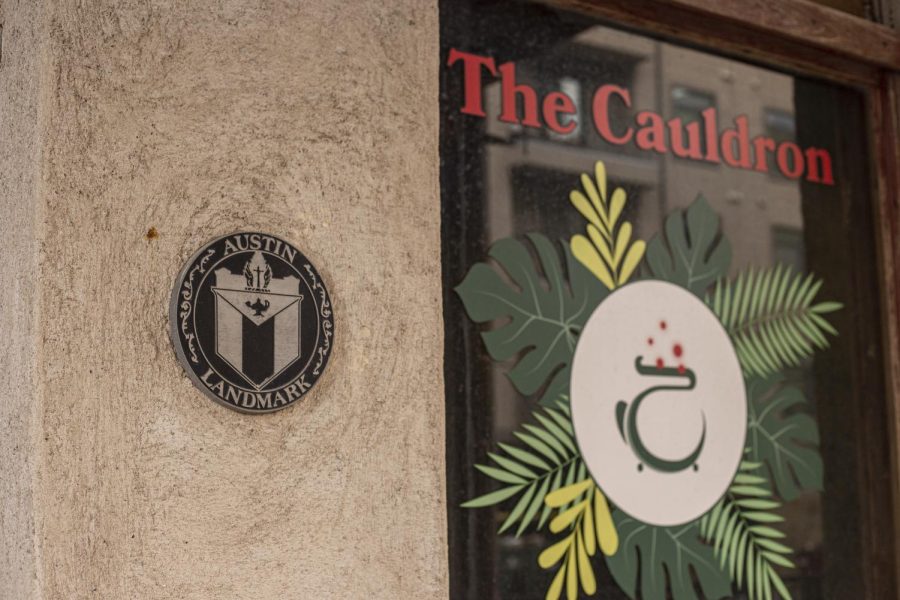Hybrid cafe, bar opens in West Campus on historical Freedman land
November 11, 2022
On Oct. 26, the Cauldron Cafe opened its doors to the public. The property, wedged between the two buildings that make up Hilltop Apartments on 2402 San Gabriel, encompasses part of what was once Wheatville — an early Austin community of freed slaves founded by James Wheat in 1869.
The cafe, a mix of brick and wood with greenery all around, operates as a coffee shop during the day and transforms into a buzzing bar at night, according to their Instagram page.
The property was one of many units that were part of the Wheatville community, where freed slaves could live or start small businesses after the Civil War, according to the Texas State Historical Association.
Adaptive reuse of historic buildings is always a good thing because you’re keeping the life of those buildings.
— Tara Dudley
The specific unit where the Cauldron Cafe sits was once a grocery store founded by Rev. Jacob Fontaine in 1875 and later Austin’s first Black-owned newspaper “The Gold Dollar,” according to the city of Austin.
A large gold plaque hangs on the wall of the Cauldron, dictating the story of Fontaine and Wheat as a historical marker. Tara Dudley, assistant professor of architecture, theorizes that the current renter of the shop put the plaque in on his own accord, as current city historical preservation laws do not require it.
Isaac Quintanilla, owner of the Cauldron, declined to comment on the opening of the cafe or its historical status.
Dudley is a historic preservation consultant for the city of Austin. In February, Dudley spoke before the city council to call for the restoration of The Gold Dollar building to resemble its original state as closely as possible and prevent any renovations to the original balcony that identifies it in order to preserve Black history in Austin. The Cauldron has not made any renovations to the balcony.
“The voices of the community, including those of George Franklin, who was the first freedman associated with the development of 2402 San Gabriel or Reverend Jacob Fontaine, whose civic leadership was instrumental to Wheatville and the growth of Austin, have been erased,” Dudley said at a historic landmark commission meeting last February. “The city’s efforts to landmark the building have not stemmed that erasure and in some ways have contributed to it.”
Human development and family sciences junior Jordan Torres visited the Cauldron to study with a friend and was surprised when she later discovered the history of the property.
Torres believes that the Cauldron should bring more attention to the land’s history and suggested they donate a percentage of their profits to Black organizations or host an event to increase awareness of the building’s cultural significance.
“Action can sometimes be more important than words,” Torres said. “Even if previous business owners didn’t take action, that doesn’t mean they don’t have to.”
Dudley said she is opposed to any changes to the architectural integrity of a historical structure, but encourages new uses in the community given proper acknowledgement to the history.
“Adaptive reuse of historic buildings is always a good thing because you’re keeping the life of those buildings and (putting those) interiors to good use,” Dudley said. “Having an amenity that caters to students is fantastic. It’s even more wonderful when students are aware of their surroundings and historic surroundings.”



